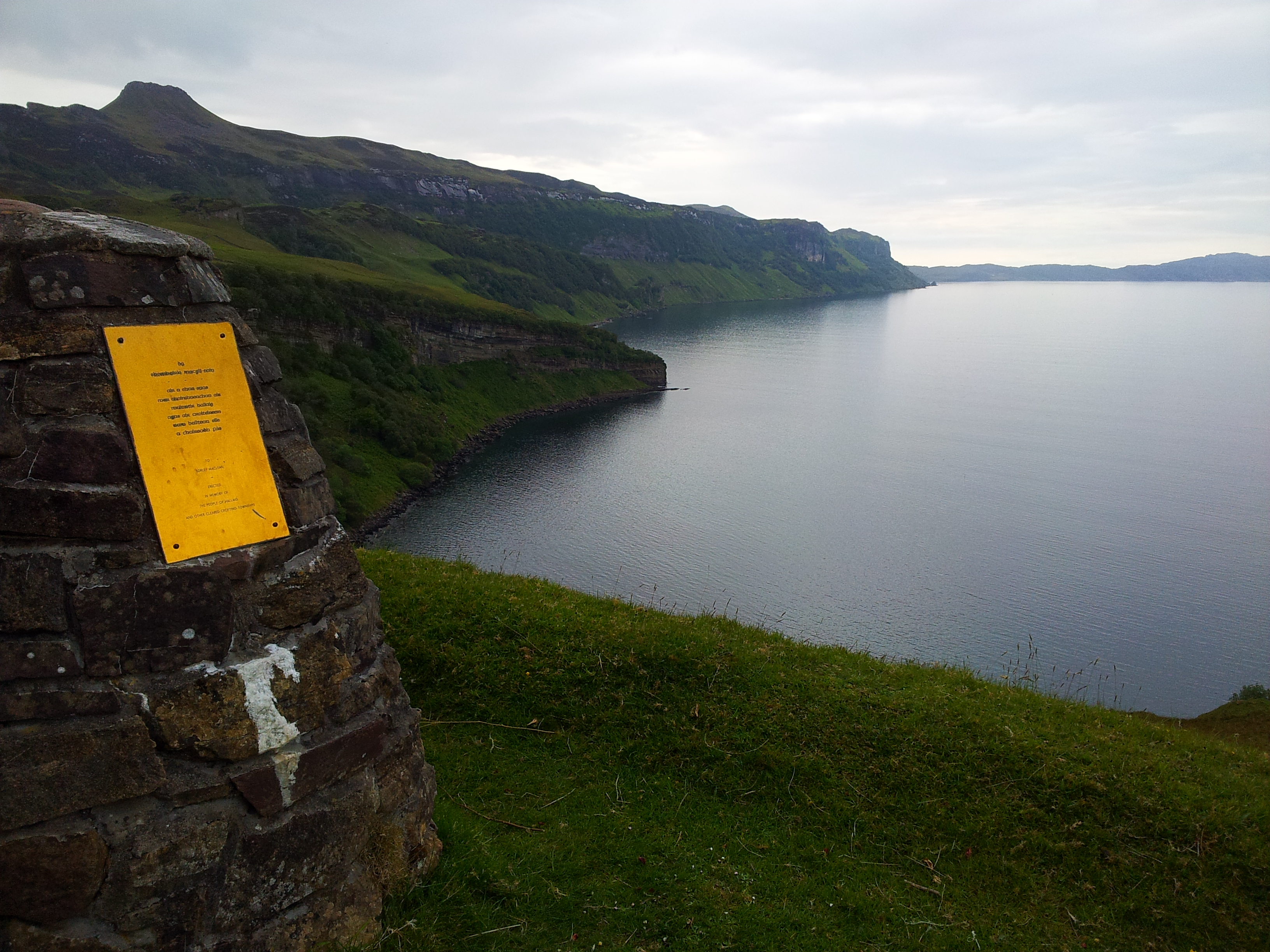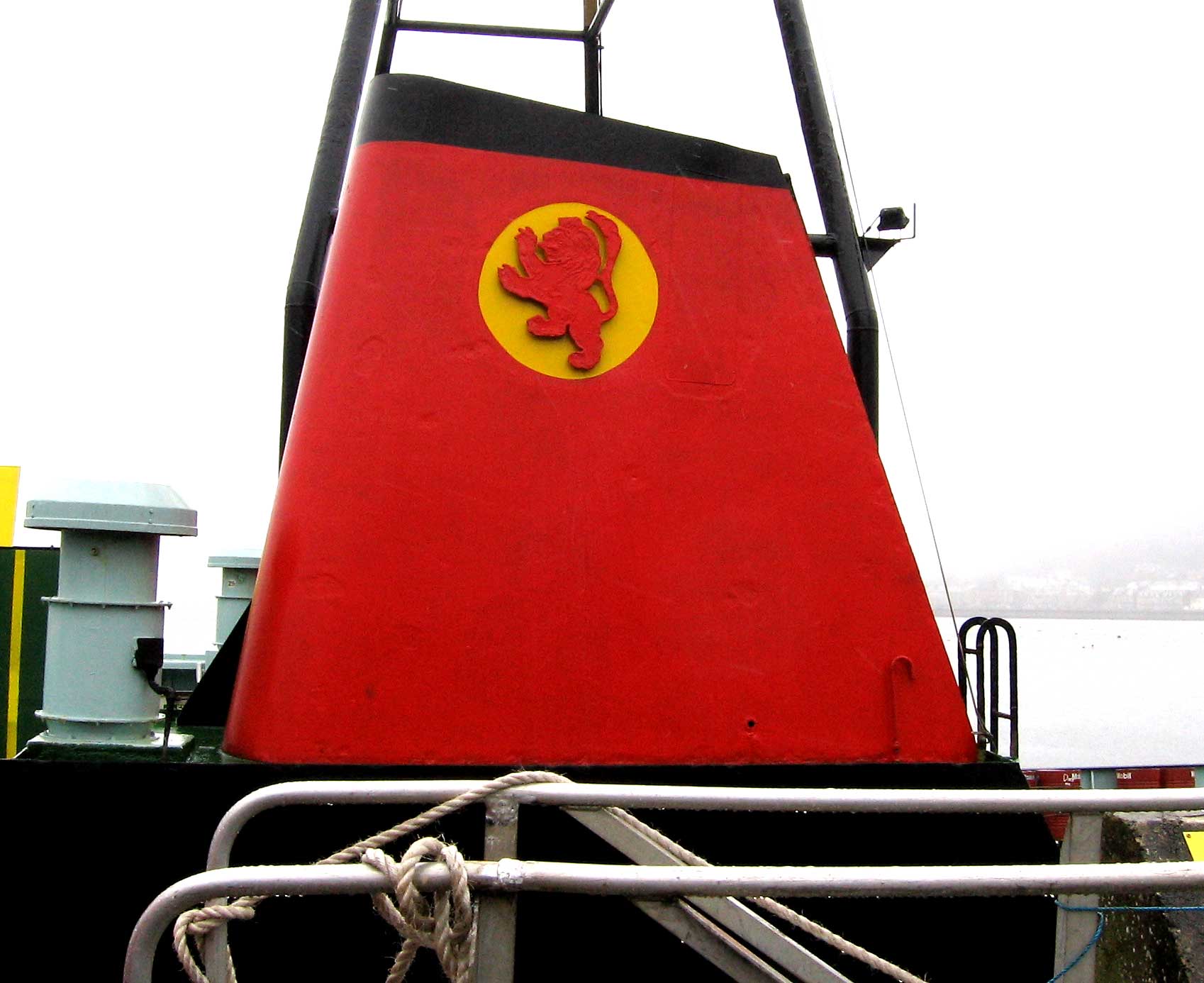|
Hallaig
''Hallaig'' is the most recognized poem of Sorley MacLean, an important Scottish poet of the 20th century. After writing it, MacLean rose to fame in the English-speaking world. It was originally written in Scottish Gaelic since the author was born on the island of Raasay, where Scottish Gaelic was the everyday language. During the course of time the poem has been translated into both English and Lowland Scots. A recent translation (2002) was made by Seamus Heaney, an Irish Nobel Prize winner. Background The poem is named after a deserted township located on the south-eastern corner of the Hebridean island of Raasay, the poet's birthplace. The settlement of Hallaig depopulated between 1852 and 1854 under George Rainy and since MacLean's relatives were affected, the author decided to evoke the community of this abandoned village in his poem. It is a reflection on the nature of time and the historical impact of the Highland Clearances leaving an empty landscape populated only b ... [...More Info...] [...Related Items...] OR: [Wikipedia] [Google] [Baidu] |
Hallaig
''Hallaig'' is the most recognized poem of Sorley MacLean, an important Scottish poet of the 20th century. After writing it, MacLean rose to fame in the English-speaking world. It was originally written in Scottish Gaelic since the author was born on the island of Raasay, where Scottish Gaelic was the everyday language. During the course of time the poem has been translated into both English and Lowland Scots. A recent translation (2002) was made by Seamus Heaney, an Irish Nobel Prize winner. Background The poem is named after a deserted township located on the south-eastern corner of the Hebridean island of Raasay, the poet's birthplace. The settlement of Hallaig depopulated between 1852 and 1854 under George Rainy and since MacLean's relatives were affected, the author decided to evoke the community of this abandoned village in his poem. It is a reflection on the nature of time and the historical impact of the Highland Clearances leaving an empty landscape populated only b ... [...More Info...] [...Related Items...] OR: [Wikipedia] [Google] [Baidu] |
Raasay
Raasay (; gd, Ratharsair) or the Isle of Raasay is an island between the Isle of Skye and the mainland of Scotland. It is separated from Skye by the Sound of Raasay and from Applecross by the Inner Sound. It is famous for being the birthplace of Gaelic poet Sorley MacLean, an important figure in the Scottish Renaissance. Traditionally the home of Clan MacSween, the island was ruled by the MacLeods from the 15th to the 19th century. Subsequently, a series of private landlords held title to the island, which is now largely in public ownership. Raasay House, which was visited by James Boswell and Samuel Johnson in 1773, is now a hotel, restaurant, bar and outdoor activity centre. Raasay means "Isle of the Roe Deer" and is home to an endemic subspecies of bank vole. The current Chief of the Island is Roderick John Macleod of Raasay. Geology and geography About north to south and east to west (at its widest), Raasay's terrain is varied. The highest point, at , is ... [...More Info...] [...Related Items...] OR: [Wikipedia] [Google] [Baidu] |
Bothy Culture (album)
''Bothy Culture'' is the second studio album by the Scottish Celtic fusion artist Martyn Bennett, released in January 1998 on the Rykodisc label. After winning critical acclaim for his debut album ''Martyn Bennett'' (1996), ''Bothy Culture'' builds upon that album's mixing of Scottish Celtic music with farther, international folk music styles and contemporary electronic music. The album celebrates and draws upon the music of Bennett's native Gaeldom as well as the music of Islam and Scandinavia, with Bennett finding and emotionally connecting to the similarities between the geographically dispersed styles. It mixes the styles with contemporary electronic music such as breakbeat and drum and bass. Named for the traditional party culture of Highland bothies, which Bennett related to modern club music subcultures, ''Bothy Culture'' was released to critical acclaim, with critics praising the effectiveness of the album's unique blend of disparate styles. Bennett formed the ban ... [...More Info...] [...Related Items...] OR: [Wikipedia] [Google] [Baidu] |
George Rainy
George Rainy (6 June 1790—9 June 1863) was a Scottish merchant, slave owner and land owner. In the early 1800s, Rainy became involved in sugar plantations in the Caribbean which were worked by African slaves in Demerara in Guiana. Due to extensive family connections he eventually became a full partner in Sandbach, Tinne & Company, a Scottish-run company which dealt in trade in the same field and was prominent in British Guiana, to the extent that the men who ran it were called the " Rothschilds of Demerara" on account of their wealth and influence. Retrieved on 20 March 2019. After the abolition of the Atlantic slave trade in the British Empire in the 1830s, Rainy became involved in the Highland Clearances. Using monies from the payout to former slave-owners following the Slavery Abolition Act 1833, he purchased the islands of Raasay, Rona and Fladda from Clan MacLeod in 1846: he removed from the land twelve townships of ninety-four Gaelic Highlander families to make ... [...More Info...] [...Related Items...] OR: [Wikipedia] [Google] [Baidu] |
Caledonian MacBrayne
Caledonian MacBrayne ( gd, Caledonian Mac a' Bhriuthainn), usually shortened to CalMac, is the major operator of passenger and vehicle ferries, and ferry services, between the mainland of Scotland and 22 of the major islands on Scotland's west coast. Since 2006, the company's official name has been CalMac Ferries Ltd, although it still operates as Caledonian MacBrayne. In 2006, it also became a subsidiary of holding company David MacBrayne, which is owned by the Scottish Government. History David MacBrayne MacBrayne's, initially known as David Hutcheson & Co., began in 1851 as a private steamship operator when G. and J. Burns, operators of the largest of the Clyde fleets, decided to concentrate on coastal and transatlantic services and handed control of their river and Highland steamers to a new company in which Hutcheson, their manager of these services, became senior partner. One of the other partners was David MacBrayne (1817-1907), nephew of Messrs. Burns. In 1878, th ... [...More Info...] [...Related Items...] OR: [Wikipedia] [Google] [Baidu] |
Hebridean
The Hebrides (; gd, Innse Gall, ; non, Suðreyjar, "southern isles") are an archipelago off the west coast of the Scottish mainland. The islands fall into two main groups, based on their proximity to the mainland: the Inner and Outer Hebrides. These islands have a long history of occupation (dating back to the Mesolithic period), and the culture of the inhabitants has been successively influenced by the cultures of Celtic-speaking, Norse-speaking, and English-speaking peoples. This diversity is reflected in the various names given to the islands, which are derived from the different languages that have been spoken there at various points in their history. The Hebrides are where much of Scottish Gaelic literature and Gaelic music has historically originated. Today, the economy of the islands is dependent on crofting, fishing, tourism, the oil industry, and renewable energy. The Hebrides have less biodiversity than mainland Scotland, but a significant number of seals a ... [...More Info...] [...Related Items...] OR: [Wikipedia] [Google] [Baidu] |
Martyn Bennett
Martyn Bennett (17 February 1971 – 30 January 2005) was a Canadian-Scottish musician who was influential in the evolution of modern Celtic fusion, a blending of traditional Celtic and modern music. He was a piper, violinist, composer and producer. He was an innovator and his compositions crossed musical and cultural divides. Sporting dreadlocks at the height of his performing career, his energetic displays led to descriptions such as "the techno piper". Diagnosis of serious illness at the age of thirty curtailed his live performances, although he completed a further two albums in the studio. He died fifteen months after release of his fifth album '' Grit''. Early life He was born Martyn Bennett-Knight in St. John's, Newfoundland and Labrador, Canada. His father Ian Knight was a Welsh geologist and musician. His mother was Margaret Bennett, singer and folklorist who was born on Skye. His grandfather, George Bennett, was also an enthusiastic piper. For his first five years, he ... [...More Info...] [...Related Items...] OR: [Wikipedia] [Google] [Baidu] |
Seamus Heaney
Seamus Justin Heaney (; 13 April 1939 – 30 August 2013) was an Irish poet, playwright and translator. He received the 1995 Nobel Prize in Literature.Obituary: Heaney ‘the most important Irish poet since Yeats’ ''Irish Times,'' 30 August 2013.Seamus Heaney obituary ''The Guardian,'' 30 August 2013. Among his best-known works is '''' (1966), his first major published volume. H ... [...More Info...] [...Related Items...] OR: [Wikipedia] [Google] [Baidu] |
Highland Clearances
The Highland Clearances ( gd, Fuadaichean nan Gàidheal , the "eviction of the Gaels") were the evictions of a significant number of tenants in the Scottish Highlands and Islands, mostly in two phases from 1750 to 1860. The first phase resulted from agricultural improvement, driven by the need for landlords to increase their income – many had substantial debts, with actual or potential bankruptcy being a large part of the story of the clearances. This involved the enclosure of the open fields managed on the run rig system and shared grazing. These were usually replaced with large-scale pastoral farms on which much higher rents were paid. The displaced tenants were expected to be employed in industries such as fishing, quarrying or the kelp industry. Their reduction in status from farmer to crofter was one of the causes of resentment. The second phase involved overcrowded crofting communities from the first phase that had lost the means to support themselves, through fa ... [...More Info...] [...Related Items...] OR: [Wikipedia] [Google] [Baidu] |
Gairm
''Gairm'' was a Scottish Gaelic quarterly magazine founded in 1951 by Derick Thomson, and Finlay J. MacDonald (Fionnlagh Domhnallach). Its first issue was published in Autumn 1952. MacDonald served as an editor until 1964; Thomson remained present for decades until it ceased publication in 2004, producing just over 200 issues in total. According to Alan Campbell, the magazine was a "one-man show;" he explained that Thomson "sustained something very valuable for a long period of time." Although it had a relatively low circulation, it was influential on Gaelic literature as it was the longest-running Gaelic literary magazine of the 20th century, in circulation for more than twice as long as its predecessor, '' Guth na Bliadhna''. Gairm attempted to encompass a variety of perspectives and themes, and "disseminated a lot of work that we weren't aware of" in the words of Martin MacDonald. As well as being familiar to most literate Gaels, the magazine attracted almost all influential Gae ... [...More Info...] [...Related Items...] OR: [Wikipedia] [Google] [Baidu] |
Scottish Poems
Scottish usually refers to something of, from, or related to Scotland, including: *Scottish Gaelic, a Celtic Goidelic language of the Indo-European language family native to Scotland *Scottish English *Scottish national identity, the Scottish identity and common culture *Scottish people, a nation and ethnic group native to Scotland *Scots language, a West Germanic language spoken in lowland Scotland * Symphony No. 3 (Mendelssohn), a symphony by Felix Mendelssohn known as ''the Scottish'' See also *Scotch (other) *Scotland (other) *Scots (other) *Scottian (other) *Schottische The schottische is a partnered country dance that apparently originated in Bohemia. It was popular in Victorian era ballrooms as a part of the Bohemian folk-dance craze and left its traces in folk music of countries such as Argentina (" chotis"Sp ... * {{disambiguation Language and nationality disambiguation pages ca:Escocès ... [...More Info...] [...Related Items...] OR: [Wikipedia] [Google] [Baidu] |






